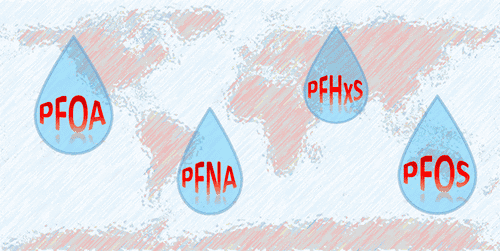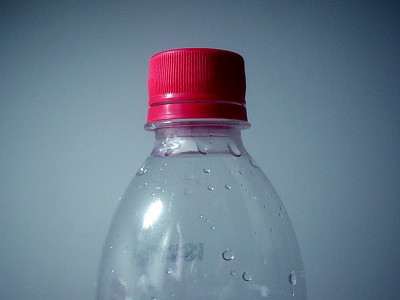Research results that 'drinking rainwater' is dangerous everywhere on earth, caused by 'eternal chemicals'

Rainwater contains man-made chemicals that do not exist in nature called polyfluoroalkyl compounds (PFAS). This PFAS has become dangerous in recent years, and in light of the strictest international PFAS-related guidelines, rainwater may not be safe to drink anywhere in the world, researchers at Stockholm University announced. .
Outside the Safe Operating Space of a New Planetary Boundary for Per- and Polyfluoroalkyl Substances (PFAS)
https://pubs.acs.org/doi/10.1021/acs.est.2c02765
Rainwater everywhere on Earth unsafe to drink due to 'forever chemicals', study finds | Euronews
https://www.euronews.com/green/2022/08/04/rainwater-everywhere-on-earth-unsafe-to-drink-due-to-forever-chemicals-study-finds
PFAS, a man-made chemical substance, has excellent non-adhesive and antifouling properties, and is widely used in food packaging , electronic equipment, and to prevent burning of frying pans. In recent years, the harmfulness of PFAS has attracted attention, and in October 2021, President Biden of the United States announced the regulation of PFAS, and McDonald's and Amazon stopped using it for food packaging. I'm here. In Japan, in April 2010, it was designated as a Class 1 Specified Chemical Substance under the Law Concerning the Examination and Regulation of Manufacture, etc. of Chemical Substances. PFAS was virtually completely abolished , including the regulation of semiconductors that had been approved in 2017.
In addition, perfluorooctanoic acid (PFOA) contained in PFAS is known to cause cancer. As a result, the `` safety guideline value for PFOA contained in water '' set by the United States Environmental Protection Agency (EPA) has decreased to 1/37.5 million of the value set 20 years ago. In the paper, Ian Cousins of Stockholm University said, 'Many people around the world expect rainwater to be safe to drink and consider it a source of drinking water. However, it is based on the EPA's latest PFOA guidelines. , The PFOA value contained in rainwater greatly exceeds safety standards, and it is judged that rainwater is not safe to drink anywhere in the world.'

The image below shows the amount of PFOAs, which are a combination of PFOA, perfluorooctanesulfonic acid (PFOS) , PFOA, PFOS, etc. contained in rainwater, measured and graphed for each location. The top is a graph about PFOA, and the wavy line shows the latest health standard value in the United States. The middle is a graph about PFOS, and the wavy line shows the US health standard value and the harmful standard value set by the EU. At the bottom is a graph of PFAAs, with the dashed line indicating the Danish Drinking Water Guidelines. Blue bars are for samples taken near 'fluoropolymer factories', yellow bars are for 'urban areas', green bars are for 'rural areas', and red bars are for 'less populated rural areas'. I'm here. The graph shows that PFOA levels in rainwater exceed US health standards everywhere. PFOS and PFAAs levels also exceeded US health standards in most locations, with the exception of sparsely populated rural areas. According to the paper, there are areas on the earth with relatively low PFAS levels, but even in remote areas such as Antarctica and the Tibetan Plateau, PFAS exceeding the standard value was found in rainwater.

PFAS is difficult to decompose in the natural world and in the body, and once it is produced, it is easy to accumulate, so it is also called a 'permanent chemical substance'. It is believed that there is a high possibility that
The PFAS reference values used in the paper are based on the most stringent international guidelines, and are not representative of PFAS international guidelines. Others argue that although PFAS and PFOA persist in the environment and human body, their direct causal relationship with adverse health conditions has not been proven. On the other hand, following the results of the Stockholm University study, there are also calls for stricter restrictions on PFAS, and Jane Munke, managing director of the Food Packaging Foundation in Zurich, said, 'Millions of people are drinking. It is unacceptable that some people are profiting economically while polluting water and causing serious health problems. Such enormous costs must be paid for by the industries that manufacture and use these toxic chemicals,' he said.
Related Posts:
in Science, Posted by log1e_dh







